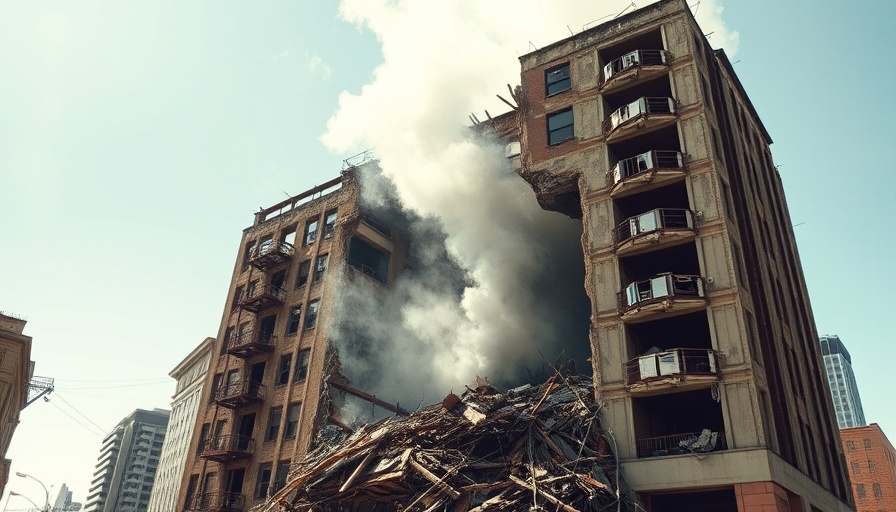
Reflecting on Tragedy: The Oklahoma City Bombing's Aftermath
As the nation pauses to recognize the 30-year anniversary of the Oklahoma City bombing, the memory of that tragic day remains etched in the hearts of many. On April 19, 1995, a rented Ryder truck loaded with explosives detonated in front of the Alfred P. Murrah Federal Building, taking the lives of 168 individuals, including 19 children, and injuring over 600 others. This horrific event not only reshaped Oklahoma City but also shook the very foundations of American society and its response to domestic terrorism.
The National Reflection: A Nation United in Grief
Survivors and families of the victims gathered at the Oklahoma City National Memorial, a symbol of resilience built on the site of destruction. The memorial's haunting inscription, "We come here to remember, to understand, and to act," serves as a powerful reminder of the lessons learned from this dark chapter in history. Oklahoma City's response to the tragedy became a model for community healing and resilience. It sparked national conversations around security, violence, and the pressing need for unity, particularly in turbulent times.
Understanding the Impact: Domestic Terrorism and Legislation
The Oklahoma City bombing marked a pivotal moment in U.S. history, prompting the government to re-evaluate domestic terrorism policies. In the wake of the attack, legislation such as the Antiterrorism and Effective Death Penalty Act of 1996 was established, aiming to curb future threats. This seismic shift in national policy illustrated how a single event could reshape not only the local landscape but also influence lawmaking at the federal level.
Commemoration and Memory: Honoring the Victims
Commemorative events held across the nation emphasize the importance of remembrance and the need to honor the victims' legacy. Schools, community centers, and local governments engage in educational programs that aim to teach younger generations about the bombing and the ripples of violence it created. Such initiatives include educational workshops about the importance of conflict resolution and the prevention of extremism, which help in nurturing an informed and compassionate society.
The Role of Media in Shaping the Narrative
The role of media during and after the bombing was crucial in shaping the public narrative. As news broke about the explosion, media outlets quickly mobilized to provide information, updates, and human stories. This coverage showcased the immediate chaos and response of first responders, but it also framed ongoing discussions about societal safety, mental health, and the impact of trauma on communities. In recent years, the evolving landscape of news consumption has changed how such tragedies are reported and remembered, leading to more comprehensive and sensitive storytelling.
Future Predictions: Lessons Learned and Emerging Challenges
As we move forward, the anniversary reminds us of both the progress made and the hurdles that persist. Recent studies have indicated that while awareness of domestic terrorism has increased, it has also morphed into new forms. The potential for increased violence related to political division and radical ideologies looms, emphasizing the ongoing need for vigilance and community unity. Analysts suggest a continued focus on mental health, community programs, and proactive policy-making to combat future threats.
Taking Action: How Can We Honor the Past?
In the spirit of healing and remembrance, individuals are encouraged to take action through community service, support for anti-violence initiatives, and participation in educational programs. Acknowledging the past is an essential step towards fostering dialogue and ensuring that history does not repeat itself. By engaging in initiatives that promote understanding and tolerance, each person can contribute to a future that honors the memories of those lost in the Oklahoma City bombing.
Conclusion: The Importance of Memory
As we reflect on the Oklahoma City bombing, it is vital to remember the voices of those affected—victims, survivors, and their families. Their stories serve as constant reminders of the importance of compassion, unity, and resilience in the face of unimaginable loss. The lessons learned from that day continue to resonate today, reminding us all of the ongoing fight against violence and the importance of community solidarity.
For those interested in learning more about how individuals and communities can engage with this history, it’s essential to seek out local memorials, initiatives, and communities focused on collective healing and action.
 Add Element
Add Element  Add Row
Add Row 



Write A Comment